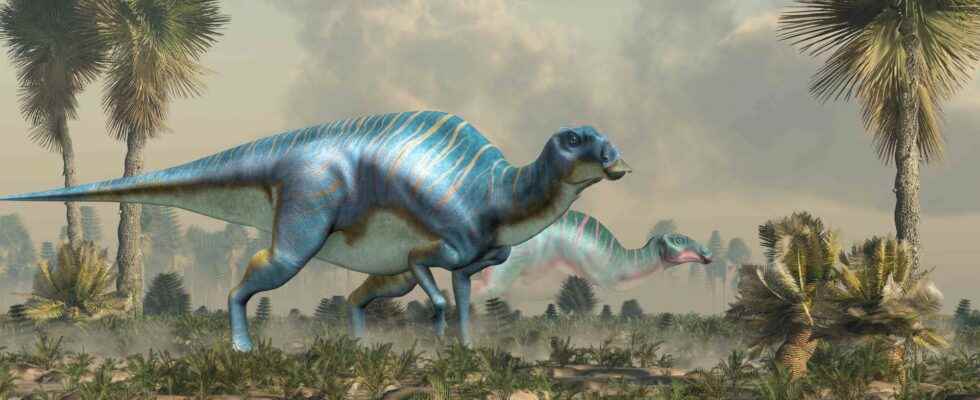While the Dinosaur Provincial Park in Canada is well known for its wealth of fossils, this new discovery of a Hadrosaur skeleton is quite special: the exposed part indeed has several fragments of fossilized skin which promise to provide valuable and new information on this Cretaceous dinosaur.
You will also be interested
[EN VIDÉO] Interview: three exceptional dinosaurs Dinosaurs are amazing creatures by their nature, their abilities or their size. They know no equivalent in the current animal world. Futura-Sciences interviewed Éric Buffetaut, paleontologist, to tell us about the most surprising dinosaurs.
Each dinosaur fossil discovery brings to scientists its share of emotion. But there are some that are particularly hectic. This is the case for this surprising discovery of a Hadrosaur skeleton, made in 2021. While walking in Dinosaur Provincial Park, Canada, a group of students and scientists stumble upon a small part of a skeleton of this duck-billed dinosaur which emerges on the side of a small hill. At first glance, nothing exceptional for the place.
The site, classified by Unesco, is renowned for its formidable concentration of fossils dating from the end of the Cretaceous (77-75 million years) and the paleontologists go there regularly to excavate new specimens. Several Hadrosaur skeletons have already been found in the region.
But on closer inspection, the scientists note a detail that is important: the exposed section, which corresponds to the tail and part of the individual’s leg, has several areas with remains of fossilized skin. The surfaces covered are also quite large.
A very promising discovery
It does not take more to quickly set up an excavation mission because the discovery is extremely promising. The position of the visible part of the skeleton indeed suggests that the specimen could have been preserved in its entirety, the vast majority of the fossil being for the moment still buried in the gray sedimentary rock forming the small hill.
If it is common to find remains of Hadrosaur within this park, discovering an entire specimen is much rarer and could bring important information hitherto missing on the appearance of this herbivorous dinosaur and its anatomy. Scientists also hope to find other areas covered with fossilized skin, which would help to paint a much more detailed portrait of this species.
To regain fragments of fossilized skin is indeed very rare, this soft part being more difficult to preserve than the bones. In view of the extent of covered areas on the exposed part of the fossil, scientists suggest that the specimen got buried very quickly, certainly less than two days after his death. This would have allowed the exceptional preservation of the skin.
Another specificity of this discovery: the small size of the bones of the tail and the foot suggests that it could be a young individual. A discovery, once again, quite rare and which could allow us to better understand how these dinosaurs evolved and developed with age.
Much information to come on the “Cretaceous cow”
The Hadrosaurs are one of the emblematic figures of the Cretaceous. The number of fossils discovered is in fact so great that this species is nicknamed the Cretaceous cow, the herds must have been numerous at that time.
The excavation of this unique specimen thus began in August 2022 and should last several months. A long and meticulous work is announced, but it is necessary in order to guarantee the good preservation of the fossil.
Once cleared, the skeleton will be transferred to the preparation laboratory for the Royal Tyrell Museum, with the aim of being studied and analyzed from every angle. This study should still take several years. Patience is required but should undoubtedly bring its share of surprises and scientific advances.
Interested in what you just read?
